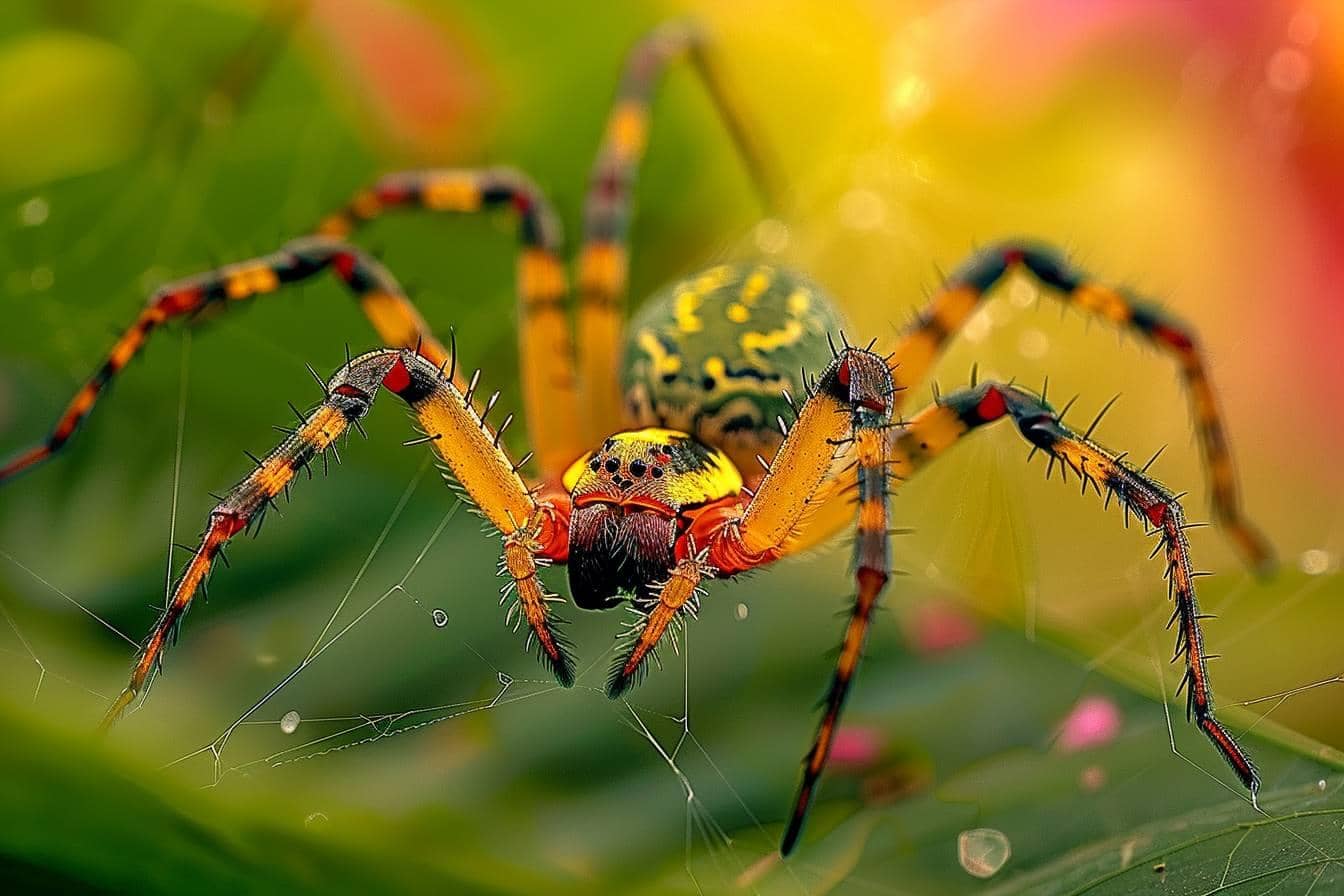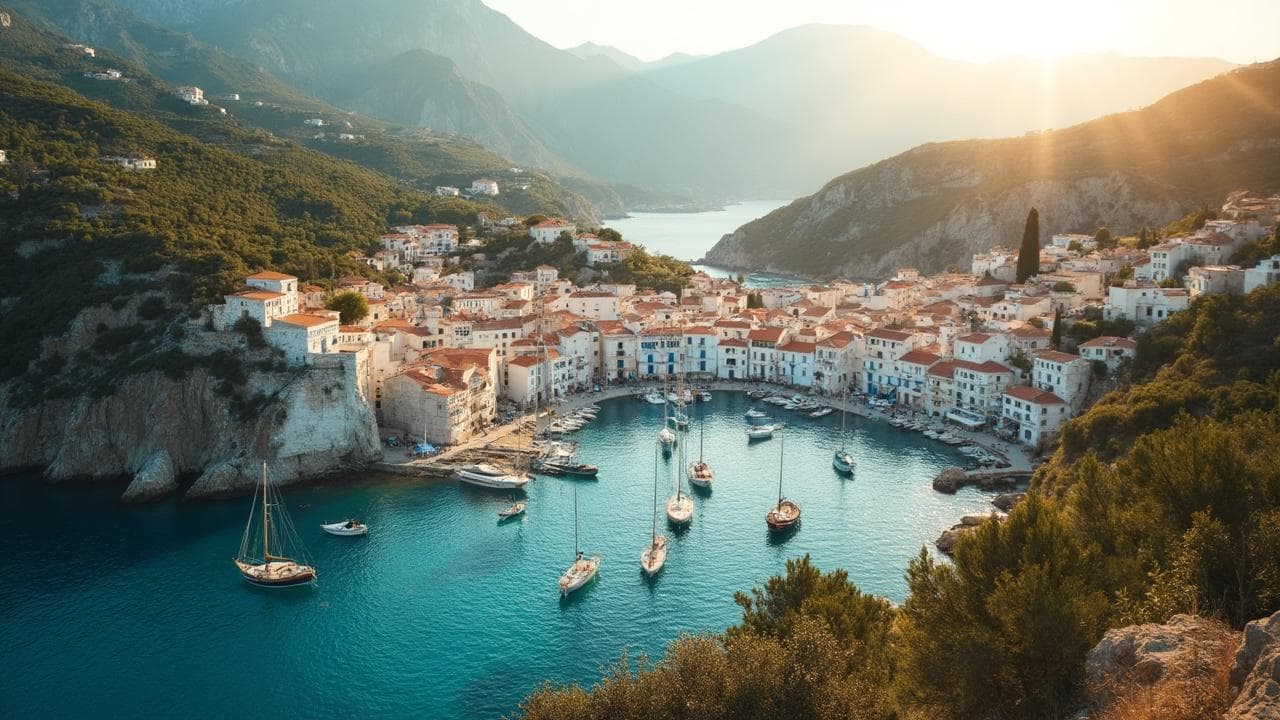When you think of Bali, images of stunning beaches, vibrant culture, and lush jungles often come to mind. Yet, for those of us with a penchant for the extraordinary, Bali also offers a lesser-known fascination: its diverse spider population.
While tourists flock to witness the island’s iconic rice terraces and ancient temples, a fascinating world of arachnids thrives in the background, playing crucial roles in Bali’s complex ecosystems
This article delves into the captivating realm of Bali’s spiders, from the common orb-weavers to the elusive tarantulas, offering insights into their behavior, habitat, and cultural significance.
In this article
- Exploring the biodiversity of Bali's spiders
- Understanding spider behavior and habitat
- The cultural significance of spiders in Balinese tradition
- Exploring Bali: a spider lover's guide
- Tips for spider enthusiasts
- Conservation and Ecological Importance
- Final words
Exploring the biodiversity of Bali’s spiders
Bali’s tropical climate and varied ecosystems provide an ideal habitat for numerous spider species.
From dense forests to serene rice paddies, the island supports a wide range of arachnids, each adapted to its specific niche.
This diversity contributes to the island’s ecological balance and offers a unique opportunity for nature enthusiasts and researchers to observe and study these fascinating creatures in their natural habitats.
I encountered several unique spiders during my treks that left me in awe.
Orb-Weavers: the web architects
One of the most common but equally impressive spiders found in Bali is the orb-weaver. These spiders are known for their intricate webs stretching across remarkable distances.
I remember walking through the Tegallalang Rice Terraces early one morning, the dew glistening on the webs as the sunlight broke through the mist—a perfect setting for some stunning photography.
Giant Golden Orb-Weaver (Nephila pilipes)
Nephila Pilipes, or the Giant Golden Orb-Weaver, stands out amongst orb-weaving spiders.
This species is known for its golden silk and large size, with females often dwarfing the males.
The webs of these spiders can span several meters, creating spectacular displays in Bali’s forests and gardens.
Key characteristics
- Females can reach up to 20 cm in leg span
- Produces distinctively golden-colored silk
- Webs can span several meters in diameter
- Often found in forest clearings and gardens
Hawaiian Garden Spider (Argiope appensa)
Another prominent species is the Argiope appensa, or Hawaiian Garden Spider, recognizable by the distinctive zigzag pattern in its web.
This orb-weaver is visually striking and plays a vital role in controlling insect populations in Bali’s agricultural areas.
Key characteristics
- Creates a unique zigzag pattern in its web
- Black and yellow coloration for warning predators
- Commonly found in gardens and agricultural areas
- Females can reach up to 6 cm in body length
Tarantulas: the enigmatic giants
While tarantulas may send a chill down your spine, they are crucial to Bali’s ecosystem. During one of my late-night explorations guided by a local expert, we ventured into the Bali Barat National Park.
Our red lights revealed the hidden world of Chilobrachys, a burrowing tarantula found in Bali. These nocturnal hunters play a pivotal role in controlling insect populations.
Unlike their Hollywood portrayal, most tarantulas are more docile and interested in escaping than engaging. My fascination wasn’t just in observing these spiders but also in understanding their behavior and habitat.
Bali is home to several tarantula species, including the Selenocosmia javanensis and various Chilobrachys species.
These burrowing tarantulas are primarily found in the island’s forested areas, where they construct intricate underground dwellings.
Despite their intimidating appearance, these spiders are generally shy and play a crucial role in the forest ecosystem as predators of various insects and small vertebrates.
Javan Rustleg Tarantula (Selenocosmia javanensis)
Key characteristics
- Brown to dark brown coloration
- Can reach up to 16 cm in leg span
- Primarily nocturnal and terrestrial
- Constructs burrows in forest floors
Chilobrachys Species
Key characteristics
- Various species found in Bali’s forests
- Often have vibrant colors on their legs or abdomen
- Excellent burrowers, creating complex underground homes
- Play a crucial role in controlling forest insect populations
Jumping Spiders: The Agile Hunters
The island’s diverse landscapes also support a variety of jumping spiders from the Salticidae family.
These small but charismatic spiders are known for their excellent vision and impressive hunting prowess.
Unlike web-building spiders, jumping spiders actively stalk and pounce on their prey, making them fascinating subjects for observation and photography.
Key characteristics
- Excellent vision with four large forward-facing eyes
- Capable of jumping up to 50 times their body length
- Often brightly colored or patterned
- Found in various habitats, from forests to urban areas
Notable Bali species
- Cosmophasis umbratica: Known for its iridescent scales
- Phintella versicolor: Displays vibrant color changes
Crab Spiders: Masters of Camouflage
Crab spiders like the Thomisus spectabilis add another layer to Bali’s spider diversity.
These masters of camouflage are often found in flowers, where they ambush unsuspecting insect pollinators.
Their ability to change color to match their surroundings makes them both effective predators and challenging subjects for spider enthusiasts to spot.
Key characteristics
- Ability to change color to match their surroundings
- Crab-like sideways movement
- Often found on flowers or leaves
- Excellent ambush predators
Invasive Species and Their Impact
As with many ecosystems worldwide, Bali faces challenges from invasive spider species.
These non-native spiders can potentially disrupt local ecosystems and compete with native species.
Notable invasive species
- Brown Widow Spider (Latrodectus geometricus)
- Pantropical Huntsman Spider (Heteropoda venatoria)
Understanding the impact of these invasive species on Bali’s native spider populations is an important area of ongoing research and conservation efforts.
Understanding spider behavior and habitat
Understanding where and how these spiders live provides insight into Bali’s broader ecological web.
Each species has adapted to specific environmental niches, contributing to the island’s overall biodiversity and ecological balance.
Web builders and their environments
Orb-weaving spiders, such as the Giant Golden Orb-Weaver, thrive in areas with high insect traffic.
These locations often include the edges of forests, gardens, and agricultural areas.
With its diverse insect population, Ubud’s famous Monkey Forest provides an excellent habitat for these web-builders.
Visitors to the forest can often spot impressive orb webs spanning between trees, especially in the early morning when dew highlights the intricate silk structures.
Traditional Balinese villages, with their mix of garden spaces and surrounding vegetation, also offer ideal environments for orb-weavers.
The balanced ecosystems maintained by local farming practices ensure a steady supply of insects, supporting healthy spider populations.
Observing these spiders in such settings provides a unique perspective on the interplay between human activity and natural biodiversity in Bali.
During my explorations, I found many webs in Ubud’s Monkey Forest and along the paths of traditional Balinese villages. These locations offer an abundance of insects, mainly due to the balanced ecosystem the locals preserve.
Burrowing spiders and their niches
Burrowing spiders, including tarantulas, prefer more secluded and moist environments.
The undisturbed rainforest floors of Bali, particularly in areas like the Bali Barat National Park, provide perfect conditions for these spiders.
Near streams or in heavily shaded areas, patient observers might spot the entrances to tarantula burrows, often marked by a subtle silk lining.
These spiders are primarily nocturnal, making nighttime excursions in the national park an exciting opportunity for wildlife enthusiasts.
With the guidance of experienced local rangers, visitors can witness these usually hidden arachnids emerging from their burrows to hunt or maintain their dwellings.
Adaptive behaviors and survival strategies
The adaptive behaviors of Bali’s spiders showcase the remarkable resilience of these creatures.
Orb-weavers, for instance, have developed the ability to quickly rebuild their webs when damaged by Bali’s frequent rains or high winds.
This adaptability ensures their continued success in the island’s sometimes unpredictable climate.
Tarantulas have evolved highly sensitive hairs covering their bodies, allowing them to detect the slightest vibrations from potential prey or approaching threats.
This adaptation enables them to remain hidden in their burrows until the perfect moment to strike or retreat, making them highly successful ambush predators.

Hunting Strategies
With their exceptional eyesight, jumping spiders have developed complex hunting strategies that rely on visual cues.
Their ability to plan and execute precise jumps to capture prey demonstrates a level of cognitive sophistication not often associated with arachnids.
Observing these tiny hunters in action in Bali’s varied habitats can be a rewarding experience for patient and keen-eyed nature enthusiasts.
The cultural significance of spiders in Balinese tradition
Spiders also hold a cultural significance in Bali, symbolizing creativity and patience in local folklore. This perspective offers an intriguing blend of natural history and cultural anthropology.
Folklore and local beliefs
While in Tegallalang, a local Balinese farmer shared stories about spiders, symbolizing patience and creativity. These stories often depict spiders as wise creatures that teach valuable life lessons. The intricate webs we find are seen as metaphors for life’s complex paths and connections.
Artistic influences
Bali’s rich artistic heritage often draws inspiration from nature, including spiders. Traditional Balinese art, especially in regions like Ubud, features intricate patterns that reflect the symmetry and design of spider webs.
During my visit to local art galleries, this discovery made me appreciate the deep connection between the island’s biodiversity and cultural expressions.
| Type of Spider | Common Habitat | Behavior |
|---|---|---|
| Orb-Weavers | Forests, gardens, rice paddies | Build intricate webs to catch prey |
| Tarantulas | Forest floors, burrows | Nocturnal hunters, burrow dwellers |
Exploring Bali: a spider lover’s guide
Bali offers plenty of opportunities if you’re inclined towards unusual and fascinating wildlife like me.
Here are some top spots to explore.
Bali Barat National Park: A Nocturnal Adventure
Bali Barat National Park stands out as a premier destination for spider enthusiasts.
This vast protected area encompasses diverse ecosystems, from mangrove swamps to monsoon forests, each supporting its own array of spider species.
Night tours in the park are particularly rewarding, offering chances to spot nocturnal tarantulas emerging from their burrows.
The park’s rangers are often well-versed in local wildlife, including spiders, and can provide invaluable insights into the behaviors and habitats of various species.
A guided night walk through the park might reveal the glowing eyes of hunting spiders, the intricate construction of newly built webs, or even the rare sight of a tarantula molting its exoskeleton.
Ubud’s Monkey Forest: Where Nature Meets Culture
Ubud’s famous Monkey Forest, while known primarily for its monkeys, is also a haven for diverse spider species.
Early morning visits are ideal for observing orb-weavers as they repair and rebuild their webs, glistening with dew in the soft morning light.
The forest’s well-maintained paths allow for easy exploration, and the juxtaposition of natural spider habitats with ancient temples creates a uniquely Balinese experience.
Look for spiders in less-trafficked forest areas, where the monkeys or human visitors are less likely to disturb them.
Tegallalang Rice Terraces: Spiders in Agricultural Landscapes
The Tegallalang Rice Terraces offer a different but equally fascinating setting for spider observation.
Here, against the backdrop of Bali’s iconic tiered rice fields, visitors can spot various orb-weavers and crab spiders.
The early morning or late afternoon light creates perfect conditions for photography, with the golden hour illuminating delicate spider webs strung between rice stalks.
This location provides a unique opportunity to witness how spiders adapt to and thrive in human-altered landscapes.
Pay attention to the edges of the terraces and the spaces between plants, where spiders often construct their webs to catch insects attracted to the crops.
Nusa Penida: Off-the-Beaten-Path Spider Habitats
For those seeking a more off-the-beaten-path experience, the island of Nusa Penida, just off Bali’s coast, offers relatively undisturbed natural habitats.
Its rugged landscapes and lower tourist numbers provide opportunities to observe spiders in more pristine environments.
The island’s diverse terrain, from limestone cliffs to lush forests, supports a wide range of spider species, some of which may be endemic to the area.
Exploring the coastal areas can reveal unique adaptations of spiders to saltwater environments, while the inland forests may host species rarely seen on Bali’s main island.
Munduk: Spiders of the Misty Forests
The Munduk area in north-central Bali, known for its cooler climate and lush forests, provides yet another unique spider-watching opportunity.
The area’s waterfalls and dense vegetation create microhabitats that support spider species less commonly found in Bali’s warmer coastal regions.
Trekking through Munduk’s forests can reveal hidden spider communities, from tiny jumping spiders to larger orb-weavers adapted to the misty environment.
The abundance of water sources in this area also attracts various insects, creating rich hunting grounds for spiders.
Tips for spider enthusiasts
Essential equipment
When embarking on spider-watching excursions in Bali, proper equipment can greatly enhance the experience:
- A red torch is invaluable for night observations, as it allows for clear viewing without disturbing the spiders’ natural behaviors.
- For photography enthusiasts, macro lenses are essential for capturing the intricate details of smaller spider species.
- Sturdy, non-slip footwear is crucial, especially when exploring forest trails or rice terraces that can become slippery.
- A small notebook or digital device for recording observations can be useful for later reference or for contributing to citizen science projects.
Observation Techniques
Successful spider spotting relies on patience and keen observation:
- Moving slowly and quietly is essential to avoid startling these often-shy creatures.
- Patience is rewarded when waiting near webs or potential burrow sites, as spiders may initially retreat when they sense human presence.
- Careful inspection of leaves, tree bark, and crevices can reveal hidden spiders that might be overlooked at first glance.
- Learning to recognize different types of spider silk and web structures can help identify species even when the spider itself is not visible.
Connecting with local experts
One of my anecdotes involved meeting ‘Made,’ a local guide with a deep understanding of Balinese wildlife.
His passion for spiders was infectious, and he shared insider tips that greatly enhanced my encounters, from identifying rare species to understanding their ecological importance.
Guided Tours and Local Experts
Connecting with local experts can significantly enrich the spider-watching experience in Bali.
Many eco-tourism programs now include specialized guides knowledgeable about the island’s arachnid population.
These experts can help locate and identify various spider species and provide valuable context about their ecological roles and cultural significance.
Look for tours that specifically focus on Bali’s invertebrate life or broader biodiversity tours that include a focus on spiders.
Some guides may even offer specialized night tours for observing nocturnal spider species.
Community Engagement and Citizen Science
Joining local nature or photography clubs for group excursions can be an excellent way to share knowledge and experiences with like-minded enthusiasts.
These groups often have members with extensive local knowledge and may have access to less-known spider-watching locations.
Additionally, consider participating in citizen science projects focused on documenting Bali’s biodiversity.
Platforms like iNaturalist allow you to contribute your spider observations to scientific databases, potentially aiding in research and conservation efforts.
Conservation and Ecological Importance
The spiders of Bali play crucial roles in the island’s ecosystems, contributing to the delicate balance of nature in ways that often go unnoticed.
Understanding and protecting these arachnids is vital for maintaining Bali’s rich biodiversity.
Ecological Roles of Bali’s Spiders
Natural Pest Control
As predators, spiders help control insect populations, including many species considered agricultural pests.
This natural pest control is particularly important in Bali, where rice cultivation and other forms of agriculture are integral to the economy and cultural identity.
Orb-weavers and jumping spiders, in particular, play significant roles in controlling flying insect populations in agricultural areas.
Their presence can reduce the need for chemical pesticides, contributing to more sustainable farming practices.
Food Web Dynamics
In the food web, spiders serve as prey for various birds, small mammals, and reptiles, forming an important link in energy transfer through the ecosystem.
Their presence in healthy numbers is often an indicator of overall ecosystem health, reflecting the availability of prey and the quality of the habitat.
The silk produced by spiders also plays a role in the ecosystem, providing nesting material for birds and small mammals and even contributing to nutrient cycling as abandoned webs decompose.
Conservation Challenges and Initiatives
Habitat Preservation
Conservation efforts focused on Bali’s spiders are intrinsically linked to broader initiatives to preserve the island’s biodiversity.
Habitat preservation is key, as many spider species have specific environmental requirements.
The protection of Bali’s forests, mangroves, and traditional agricultural landscapes indirectly benefits spider populations by maintaining the complex ecosystems they inhabit.
Initiatives to create corridors between fragmented habitats can help maintain genetic diversity in spider populations.
Climate Change Impacts
Climate change poses a significant threat to Bali’s spider populations.
Changes in temperature and rainfall patterns can affect the availability of prey, the suitability of habitats, and the timing of important life cycle events.
Monitoring how spider populations respond to these changes can provide valuable insights into the broader impacts of climate change on Bali’s ecosystems.
Sustainable Tourism Practices
As tourism continues to be a major industry in Bali, it is crucial to develop sustainable practices that minimize the impact on natural habitats.
This includes managing visitor numbers in sensitive areas, implementing strict waste management policies, and educating tourists about preserving natural habitats.
Education and Outreach
Public Awareness Programs
Education plays a crucial role in spider conservation on the island.
Many people, both locals and tourists, harbor misconceptions or fears about spiders.
Outreach programs aimed at dispelling myths and highlighting their ecological importance can foster a greater appreciation for these often-misunderstood creatures.
Some eco-tourism initiatives now include educational components about Bali’s spider diversity, turning curious visitors into advocates for conservation.
Interactive exhibits, guided nature walks, and school programs can all help build a more spider-friendly public perception.
Citizen Science Initiatives
Engaging the public in spider observation and documentation through citizen science projects can have dual benefits.
It provides valuable data for researchers and helps build a connection between people and the natural world around them.
Encouraging visitors and locals alike to participate in biodiversity monitoring can create a sense of stewardship for Bali’s natural environments.
Research and Monitoring
Biodiversity Studies
Research on Bali’s spider populations contributes valuable data to global biodiversity studies.
The island’s unique geographic position and diverse habitats make it an important area for studying spider evolution, adaptation, and biodiversity patterns.
Ongoing research enhances our understanding of these fascinating creatures and provides crucial information for conservation strategies.
Studies focusing on endemic species, habitat preferences, and the impacts of human activities on spider populations are particularly valuable.
Long-term Monitoring Programs
Establishing long-term monitoring programs for spider populations in various habitats across Bali can provide important insights into ecosystem health and the impacts of environmental changes.
Such programs can help identify spider diversity and abundance trends, serving as early warning systems for potential ecological issues.
Balancing Development and Conservation
As Bali continues to develop and change, maintaining a balance between human activities and natural habitats becomes increasingly important.
Sustainable tourism practices, responsible land use, and community-based conservation initiatives all ensure that Bali’s spider populations—and the ecosystems they support—continue to thrive.
Integrating spider conservation into broader environmental policies and urban planning can help ensure that these important creatures are not overlooked in development decisions.
Creating green spaces in urban areas, maintaining traditional agricultural practices, and implementing wildlife-friendly building designs can all contribute to preserving habitats for Bali’s diverse spider species.
Final words
Bali’s spiders may not be the first thing that comes to mind when planning a trip to this island paradise. However, exploring this underappreciated aspect can lead to unforgettable adventures and deeper connections with Bali’s rich biodiversity.
Whether you’re a fellow digital nomad like me or just a curious traveler, take a moment to look beyond the beaches and temples. You might find the hidden beauty in the intricate webs and nocturnal hunts of Bali’s fascinating spiders.




